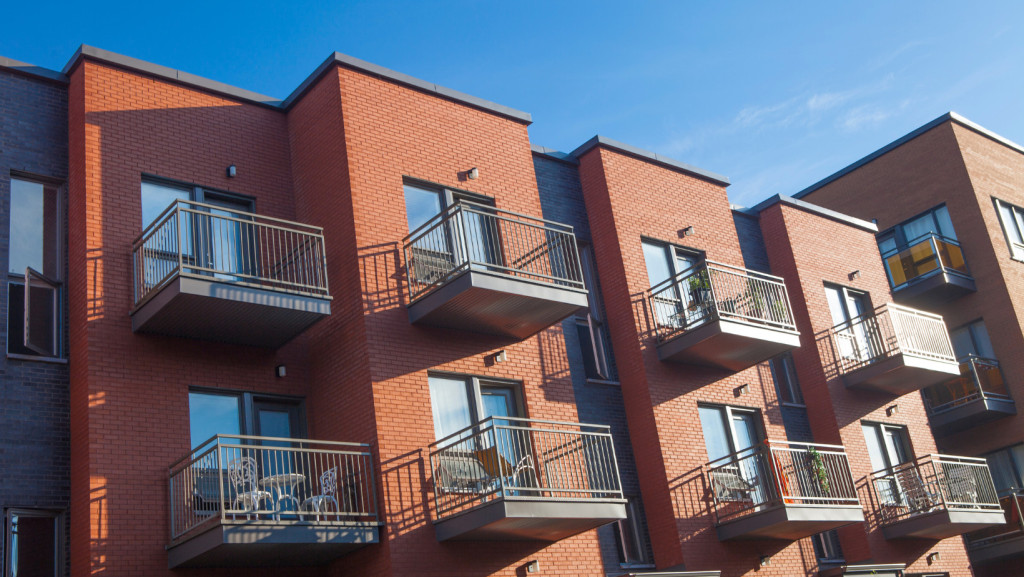Article Courtesy of Bigger Pockets
Multifamily property investing diversifies your efforts in real estate investing. Right off the bat, you use an intensified and diversified investment strategy to buy multiple homes with a single purchase. Owning a multifamily real estate property means you can earn income from multiple rental units in one property versus investing in single-family properties.
What Is a Multifamily Property?
Simply put, a multifamily home is any residential property with more than one housing unit.
These could be duplexes, triplexes, fourplexes, apartment complexes, or really anything that involves multiple tenants living in occupied units on one property. Owners can also live in any of these units, making it an owner-occupied property—something we call “house hacking,” typically done with residential multifamily properties with two, three, or four total units.
Properties with more than four units are deemed commercial, while four and below are deemed residential. This distinction is important for lending purposes, as residential multifamily lending rules differ from those for commercial investments.
In addition to the lending distinction, larger multifamily properties may have different methods for finding, analyzing, financing, and managing the property. For this reason, most investors getting into multifamily start with small residential properties and move into larger multifamily deals once they’ve gained some experience.
Now, let’s review how amazing these properties are and why you need them in your portfolio.
Benefits of Investing in Multifamily Real Estate
Single-family rentals are often the target of real estate investors, but they don’t realize the power of multifamily real estate investing. With single-family homes, you put all your eggs in one basket with only one tenant. You have tenants, or you don’t; the tenants are either good or bad, and there is no in-between. You don’t have ways to offset any downsides, especially in the long term.
With multifamily real estate investing, you have a larger tenant mix and a lower 100% vacancy risk in your real estate investment portfolio. The chances of having all non-paying or ‘bad’ tenants are slim. While you might have a unit with troublesome tenants, the tenants from the other units may offset it, especially if you have two to four units.

Multifamily vs. Single-Family Investing
My first rental property was a small two-unit duplex I bought when I was 21. Later I bought another duplex, a triplex, some fourplexes, some apartments, and some mobile home parks. Now I have more than 2,000 rental units across a dozen states—almost all multifamily. This allows me to live where I want, pay all my bills, give generously, and work far fewer hours than most.
That’s the power of multifamily real estate.
Investing in multifamily properties can change your life, whether you want just a few small deals or a real estate empire. It’s similar to investing in single-family houses, but you’re at Costco instead of shopping at Walmart. You’re buying in bulk and can quickly scale up your passive income and net worth faster than you think possible. And hey, it’s a lot of fun!
Simply stated, multifamily properties are one of the easiest ways to climb your way to millions of dollars in real estate and give you the life you’ve dreamed of.
And the great thing is that anyone can invest in multifamily, regardless of location, income, credit, experience, or bank account—if you know what you’re doing.
I love multifamily for a lot of reasons. But since you don’t want to spend the next three hours reading while I lay them all out, let me just give you four good ones.
1. Cash flow
Cash flow is the name of the game in real estate investing. When trying to get the most bang for your buck, purchasing multifamily homes is a great course to take. Why? Because multifamily properties are designed for cash flow.
Think about it. When someone builds a house, what’s usually the purpose? For someone to live in it for themselves.
A single-family home is not designed for cash flow but for comfort (yes, single-family homes can still cash flow—it’s just harder because they aren’t designed for it). Conversely, a multifamily property is generally built and sold for investment purposes. In other words, it’s designed to make cash flow.
Be careful, though. Just because it’s a multifamily property doesn’t mean it’s going to cash flow. Many different factors determine one’s monthly cash flow. There’s the mortgage payment, insurance costs, property taxes, utilities, repairs, management, saving up for replacing big items (which we call “CapEx” in the real estate world), and more.
2. Quick portfolio expansion
Wealth is not built by purchasing a property but by building a real estate portfolio. In other words, it’s not one deal that will get you the wealth and freedom you want, but the collection of many rental units.
Sure, you can buy a house every year or two, but that’s a slow path toward generating enough cash flow to quit your job, travel the world, buy a Tesla, or whatever your goal is. Multifamily housing, on the other hand, can automatically add numerous rental units to your portfolio at once, helping you scale fast.
3. Reduced risk
When you own a house and that house goes vacant, you’re 100% vacant, earning no money from that unit. But if you own multifamily properties, if one unit needs repairs or is vacant, you have other units that can carry its slack for the time being. That makes multifamily units a powerful asset, especially for a beginning investor.
4. Potential for house hacking
Finally, there’s the power of house hacking, the process by which you’ll live in one unit and rent the others out. Multifamily makes this possible!
For example, let’s say you buy a triplex, and your monthly mortgage payment for the property as a whole is $1,500. You rent out two of the units for $650 and keep one for yourself. Your individual mortgage payment is $200 per month. That’s a bargain!

Finding Multifamily Properties
The first step in finding multifamily properties is clearly defining what type you want. In The Multifamily Millionaire, I break down this step into something I call your “crystal clear criteria,” which includes defining the following.
- Property type: Is the property a small multifamily, medium-sized, or large?
- Location: Where can you build expertise in an area?
- Condition: Do you want a project or something already finished?
- Price range: Is this a $200,000 property or a $200,000,000 property?
- Profitability: What kind of financial return are you looking for?
You can better hunt for those deals once you’ve defined exactly what you’re looking for.
However, this is where we need to look at another difference between small multifamily and large multifamily.
Small multifamily deals are usually sold through real estate agents. You can search for them on websites like Realtor.com or Zillow, or even better, get yourself a rock star real estate agent who understands real estate investing to help you get those leads automatically.
It’s also possible to find these small multifamily deals off-market, meaning you directly market to owners of multifamily properties to convince them to sell you their property before they list with an agent. There are numerous off-market deal-finding strategies, but the most common are direct mail marketing, driving for dollars, and networking with owners or wholesalers.
When it comes to larger multifamily properties, while the same off-market strategies exist and can work, most sales happen through commercial real estate brokers.
These brokers are constantly networking with multifamily owners. When an owner decides to sell, the brokers will put together a fancy sales packet and attempt to find a buyer for that deal through their buyer clients. If they can’t find a buyer directly through their personal network, they may list the property for sale online through a commercial real estate sales portal such as Loopnet or Crexi, which you can visit to look through potential deals.
The key to finding multifamily properties is creating a consistent funnel of leads to pursue and then running the numbers to determine how much you can afford to offer. But how do we “run the numbers?”
What to Look for When Investing in Multifamily Properties
When investing in multifamily real estate, there are many factors to consider, including the following:
Location
Purchase multifamily real estate in areas with a large need for rentals. Also, look for properties next to amenities, such as public transportation, retail stores, and other necessities, to attract suitable tenants.
Property condition
Know the property’s condition and any necessary work to bring it up to par to ensure you have rental properties renters want to live in.
Local rental market
Assess the area’s demand. Purchasing multifamily real estate in areas where renters don’t look won’t yield the rental income you desire.
Expenses
Assess all current property expenses, such as property taxes, insurance, utilities, and any other expenses you’ll incur as the property owner.
Property management costs
Determine if you can manage the property yourself or if hiring a property management company is best. If so, consider the costs. If this is your first property, shop around to get an idea of the different rates each property manager charges in the area.
Potential income
Look at the current market rental rates, the area’s vacancy risk, and what comparable properties get for rent, considering any differences that would increase or decrease your potential income.



